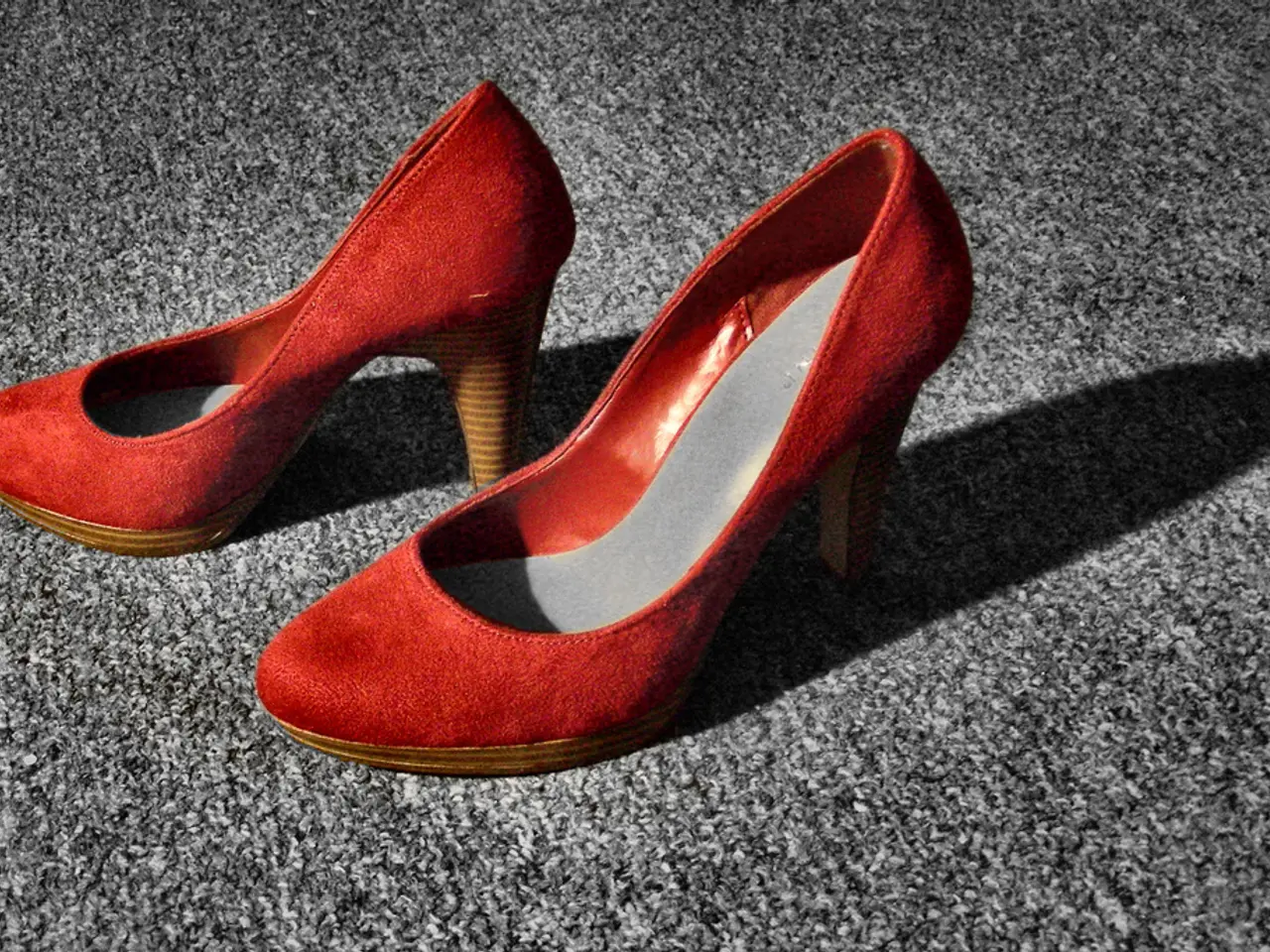Foot drop explaination: Causes, signs, remedies, and additional details
Foot drop, a condition that affects the muscles controlling the foot, can lead to weakness or paralysis. This condition can be caused by various neurological disorders, as well as other risk factors.
Common Causes and Risk Factors
Peripheral nerve compression, peripheral neuropathy, neurological conditions, spinal cord trauma, and obesity are some common causes and risk factors for foot drop. Peripheral nerve compression, especially of the peroneal nerve near the fibula, can affect signal transmission to foot-lifting muscles. Diabetes, habitual leg crossing, sensory loss, muscle weakness, medication side effects, environmental hazards, and foot deformities like bunions or hammer toes can also contribute to the development of foot drop.
Symptoms
Symptoms of foot drop may include a shoe feeling looser, difficulty lifting the foot, a higher step, one foot feeling numb or weaker, weakness or paralysis in the muscles on top of the foot, unsteady ankles and knees, and a foot dragging while walking.
Diagnosis
To diagnose foot drop, a doctor will perform a physical exam, check for signs of injury, examine a person's medical history for neurological diseases or other risk factors, carry out electromyography, order blood tests to rule out infections, arthritis, and other possible causes, and perform imaging tests such as ultrasound, X-ray, or MRI.
Treatment Approaches
Typical treatment approaches for foot drop focus on managing symptoms and the underlying cause. The use of orthotic devices such as ankle-foot orthoses (AFOs) to keep the foot in an upright position and improve walking is common. Physical therapy, including strengthening and stretching exercises to retrain muscles, soft tissue mobilizations to reduce nerve compression, and gait re-education, is also beneficial. Addressing underlying causes, such as controlling diabetes or treating neurological conditions, is crucial. In some cases, further diagnostics like MRI or nerve conduction studies may be necessary to identify precise nerve damage.
In severe cases, surgery may be recommended. Ankle fusion, nerve decompression, and tendon or nerve transfer are surgical treatment options for foot drop.
Prevention and Home Remedies
Preventing falls and improving mobility through podiatric care, supportive footwear, and environmental adjustments are important, especially in older adults. Home remedies, such as stretching, can help improve flexibility and strengthen the muscles in the legs and feet. Exercises like foot rocks, ankle dorsiflexion, and assisted toe raises can improve the foot's flexibility and range of motion.
Nerve stimulation can improve walking posture, speed, and quality of life in people with MS by applying electrical currents to the peripheral nerves that control the muscles in the legs and feet.
If you are experiencing symptoms of foot drop, it is essential to speak with a doctor. Early diagnosis and treatment can help manage the condition and prevent further complications.
- Foot drop is not exclusive to neurological disorders; other risk factors like diabetes, leg crossing, and environmental hazards can also contribute to its development.
- Neurological disorders, including multiple sclerosis (MS), can cause foot drop and might require management through nerve stimulation, a strategy that uses electrical currents to improve walking posture, speed, and quality of life.
- In the medical-health context, foot drop is associated with a variety of neurological conditions, neurological disorders, and other medical-conditions such as peripheral nerve compression, diabetes, and spinal cord trauma.
- As peripheral nerve compression can affect signal transmission to foot-lifting muscles, it is a significant risk factor for foot drop and often requires proper treatment to avoid further neurological complications.
- Regarding health-and-wellness and fitness-and-exercise, improving muscle strength and flexibility through exercise and physical therapy can help prevent foot drop or manage its symptoms more effectively.




